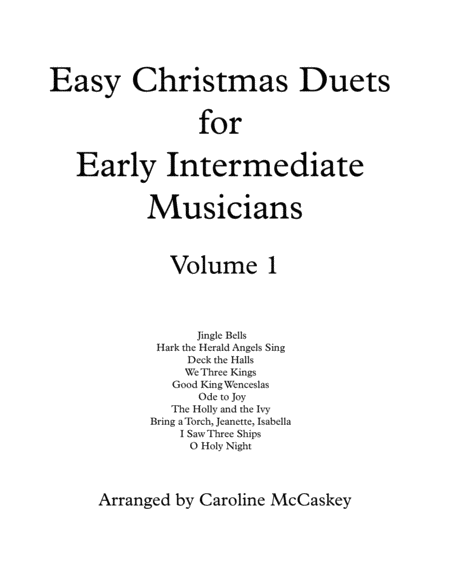Instrumental Duet Instrumental Duet,Viola,Violin - Level 2 - Digital Download SKU: A0.852386 Arranged by Caroline McCaskey. Christmas. Score and parts. 14 pages. AltStrings #3885219. Published by AltStrings (A0.852386). These Christmas favorites are arranged specifically with early intermediate to intermediate musicians in mind. Each volume contains 10 Christmas classics; collect them all and enjoy! Volume 1: Jingle Bells Hark the Herald Angels Sing Deck the Halls We Three Kings Good King Wenceslas Ode to Joy The Holly and the Ivy Bring a Torch, Jeanette, Isabella I Saw Three Ships O Holy Night Volume 2: Joy to the World Away in a Manger The First Noel O Come, O Come Emmanuel Lo, How a Rose E’er Blooming God Rest Ye Merry Gentlemen Angels We Have Heard on High Jolly Old St. Nicolas O, Little Town of Bethlehem Up on the Housetop Volume 3: We Wish You a Merry Christmas O Come, All Ye Faithful O Christmas Tree Silent Night In the Bleak Midwinter Ding Dong Merrily on High What Child Is This? It Came Upon a Midnight Clear Twelve Days of Christmas Auld Lang Syne
